
Pressure vessels are the silent workhorses of modern industry. From energy production and chemical processing to food manufacturing and pharmaceuticals, these cylindrical or spherical containers are critical in storing or transporting gases and liquids under pressure. Despite their ubiquity, few outside specialized industries truly understand how vital they are—or how dangerous they can be when improperly designed or maintained.
A pressure vessel is a container engineered to hold substances at pressures significantly different from ambient levels. Whether the contents are gases, vapors, or liquids, the integrity of the vessel is critical for safety and efficiency. Pressure vessels are subject to intense stress, both from the inside and outside, which is why their design, materials, and construction must meet strict engineering and safety standards.
You’ll find pressure vessels everywhere: in oil refineries, natural gas processing plants, power generation facilities, and even breweries. While their shapes, sizes, and capacities may vary, they all share one function: safely contain substances under pressure.
Types of Pressure Vessels
Understanding the different types of pressure vessels helps clarify their applications and importance. While they can be customized to suit nearly any need, they generally fall into these main categories:
Storage Vessels
These are among the most common types, used to store compressed gases or liquids. Think propane tanks, cryogenic vessels, and chemical storage tanks. They must be sealed tightly and often feature insulation to maintain specific temperatures or reduce the risk of explosions.
Heat Exchangers
Used primarily in power plants and chemical processing, heat exchangers transfer heat between two or more fluids. Because of their role, they must tolerate high pressure and temperature fluctuations.
Process Vessels
These are used during the manufacturing or chemical processing stages. For example, reactors where chemical reactions take place under pressure. Process vessels often include agitation or internal components like baffles or coils.
Boilers
Technically a subtype of pressure vessels, boilers generate steam by applying heat to water. Boilers are commonly found in energy and manufacturing sectors.
Horizontal vs. Vertical Pressure Vessels
Horizontal vessels are usually preferred for larger volumes or when footprint space is not a constraint. Vertical vessels, on the other hand, are ideal for processes involving gravity flow and occupy less floor space.
Custom vs. Standard Units
Depending on your industry’s specific needs, pressure vessels can be either off-the-shelf or custom-fabricated. At Red River, we specialize in custom-built pressure vessels to ensure exact specifications and compliance.
Materials and Design Considerations

The choice of materials and design specifications directly impacts the reliability, longevity, and safety of a pressure vessel. Here are key considerations:
Common Materials
- Carbon Steel: Cost-effective and widely used for moderate pressure and temperature applications.
- Stainless Steel: Offers superior corrosion resistance, especially in food-grade or pharmaceutical applications.
- Alloy Steels: Used when higher strength and resistance to heat or corrosion are required.
- Aluminum and Titanium: Lightweight and resistant to specific chemicals, though more expensive.
Wall Thickness and Shape
The wall thickness is determined by the internal pressure and the type of material used. Thicker walls withstand higher pressure but are heavier and more expensive.
Weld Quality and Fabrication
Welds are a critical factor in pressure vessel integrity. Poor welds are often the first point of failure under pressure. ASME Section IX specifies strict requirements for welding procedures and qualifications.
Internal Pressure and Temperature
Each vessel is rated for a “maximum allowable working pressure” (MAWP) and temperature. This defines the limit at which it can safely operate.
Compliance with ASME Code
The American Society of Mechanical Engineers (ASME) provides the most widely accepted design code: ASME Boiler and Pressure Vessel Code (BPVC) Section VIII. All reputable manufacturers, including Red River, ensure compliance with this standard to meet both safety and legal requirements.
Safety Features and Regulations
Pressure vessels are inherently hazardous. A rupture or leak could lead to catastrophic injury, environmental damage, or production shutdowns. As such, multiple layers of safety features and regulatory controls are essential.
Built-In Safety Devices
- Pressure Relief Valves: Automatically release pressure when limits are exceeded
- Rupture Discs: Provide backup relief when valves fail
- Automatic Shutdown Systems: Trigger alarms or halt operations during anomalies
- Manways and Inspection Ports: Allow for internal inspections and maintenance
Routine Inspections
Regular inspections ensure that no cracks, corrosion, or weld failures have developed. These inspections typically include:
- Visual Checks
- Radiographic (X-ray) Testing
- Ultrasonic Thickness Testing
- Hydrostatic Pressure Testing
Regulatory Oversight
In the U.S., several agencies and standards govern pressure vessel manufacturing and maintenance:
- ASME BPVC Section VIII
- OSHA Regulations
- National Board Inspection Code (NBIC)
- API 510 (American Petroleum Institute) for maintenance and repair standards
Failure to adhere to these regulations can result in heavy fines, legal liabilities, or even shutdown orders.
Final Thoughts on Pressure Vessels
Pressure vessels may appear simple, but they are among the most technically demanding components in industrial infrastructure. Their design, materials, construction, and maintenance are all governed by complex codes and rigorous testing.
Whether you’re dealing with a high-pressure steam boiler in a power plant or a small chemical storage tank in a lab, the safety and performance of your pressure vessel depend on choosing the right manufacturer. Poor fabrication or substandard materials can lead to catastrophic failures.
Need a reliable partner?
Red River specializes in the design and manufacturing of pressure vessels. We also fabricate related items such as prefabricated spools and skid packages.
Reach out to us today and experience the Red River difference. Where American-made products and American Values come together, we care more.
Frequently Asked Questions About Pressure Vessels
1. What is a pressure vessel used for?
Pressure vessels store or transport gases and liquids at high or low pressure. They’re commonly used in oil refineries, chemical plants, food manufacturing, and power generation.
2. What materials are used to build pressure vessels?
Most pressure vessels are made from carbon steel, stainless steel, or alloy steels. The choice depends on the pressure, temperature, and chemical properties of the contents.
3. Are pressure vessels safe?
Yes—when properly designed, fabricated, and maintained according to standards like ASME Section VIII. Safety valves, regular inspections, and certified welding all help reduce risks.
4. What is ASME Section VIII?
It’s part of the ASME Boiler and Pressure Vessel Code, which sets design, fabrication, and inspection standards for pressure vessels in the U.S. and globally.
5. How long do pressure vessels last?
With regular maintenance and inspections, most pressure vessels last 20 to 30 years. Some last even longer, depending on usage and environmental factors.
6. How often should pressure vessels be inspected?
External inspections are typically done annually. Internal inspections—more detailed and invasive—are recommended every 3–5 years.
7. What industries rely on pressure vessels?
Oil and gas, chemical processing, pharmaceuticals, power generation, food and beverage, and water treatment are just a few industries that rely on pressure vessels.
8. Can pressure vessels be customized?
Absolutely. At Red River, we build custom pressure vessels designed to meet your specific size, pressure, and compliance requirements.
Key Takeaways
- Pressure vessels are vital in industries like energy, chemical processing, and manufacturing.
- They store or transport substances under pressure and come in various forms—storage tanks, boilers, heat exchangers, and more.
Material choice, welding quality, and ASME compliance are essential to ensure safety and durability. - Built-in safety features like pressure relief valves and routine inspections minimize risk.
- Choosing a reputable manufacturer like Red River ensures long-term performance, safety, and regulatory compliance.
- If you need a customized solution, Red River has the expertise and experience to deliver.
Related Blog Post
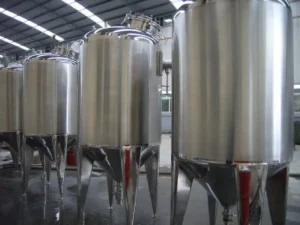
How a Glycol System Works
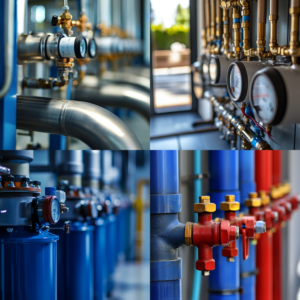
Ethylene Glycol Water: A Complete Heat Transfer Guide
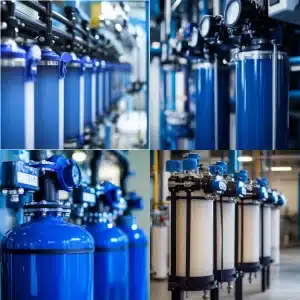
Water Filter Replacement
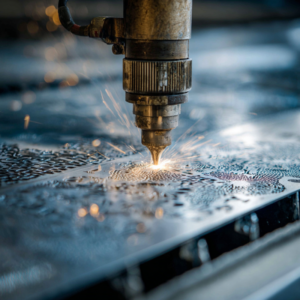
Why Use Stainless Steel Sheet Metal Fabrication?
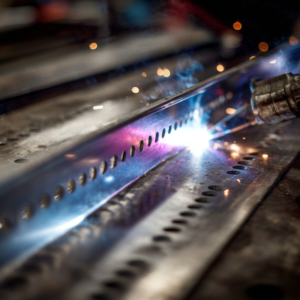
How Does Stainless Steel Sheet Metal Fabrication Work
No pillar keyword set for this post.
About Author

